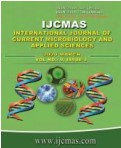


 National Academy of Agricultural Sciences (NAAS)
National Academy of Agricultural Sciences (NAAS)

|
PRINT ISSN : 2319-7692
Online ISSN : 2319-7706 Issues : 12 per year Publisher : Excellent Publishers Email : editorijcmas@gmail.com / submit@ijcmas.com Editor-in-chief: Dr.M.Prakash Index Copernicus ICV 2018: 95.39 NAAS RATING 2020: 5.38 |
Open wound management, until the wound is considered suitable for reconstruction or until it has healed by second intention, has been the treatment of choice for centuries. The aim of wound healing is to promote rapid wound closure and prevent excess scar formation. Application of platelet rich plasma remain a viable option for enhancing the granulation tissue formation and early wound bed preparation before large wounds could be reconstructed with skin flaps. The flaps performed in the present study were flank and elbow rotational flap, transposition flap, caudal superficial epigastric flap, single and bipedicle advancement flaps. The flaps were selected based on the location and site of the wound. Subjective evaluation of wound healing based on the physical observations, clinical photography, wound planimetry studies were evaluated. Additionally, hematological, bacteriological, biochemical, and histopathological evaluation were done for the recipient wound bed and skin flap. A subjective analysis of vascularity of the donor site was performed through Colour flow Doppler ultrasonography. Platelet rich plasma had the supreme advantage as it offered a multiple synergistically working growth factors that promoted mitogenesis of mesenchymal cells at the wound site. Growth factors viz., transforming growth factor-b, platelet derived growth factor and vascular endothelial growth factor were released after platelet degranulation led to fibroblast recruitment, proliferation and matrix remodelling which ultimately leads to good granulation tissue formation and wound healing in the cases.
 |
 |
 |
 |
 |